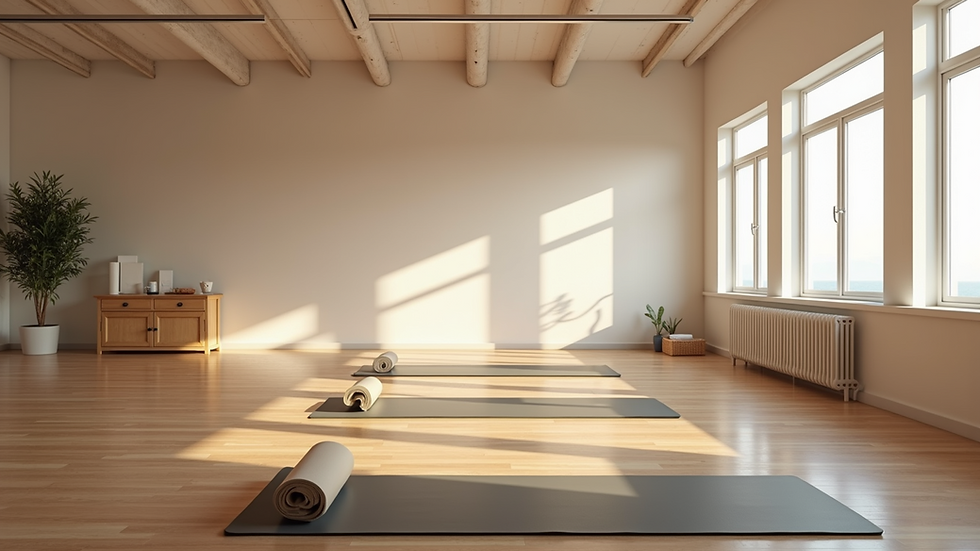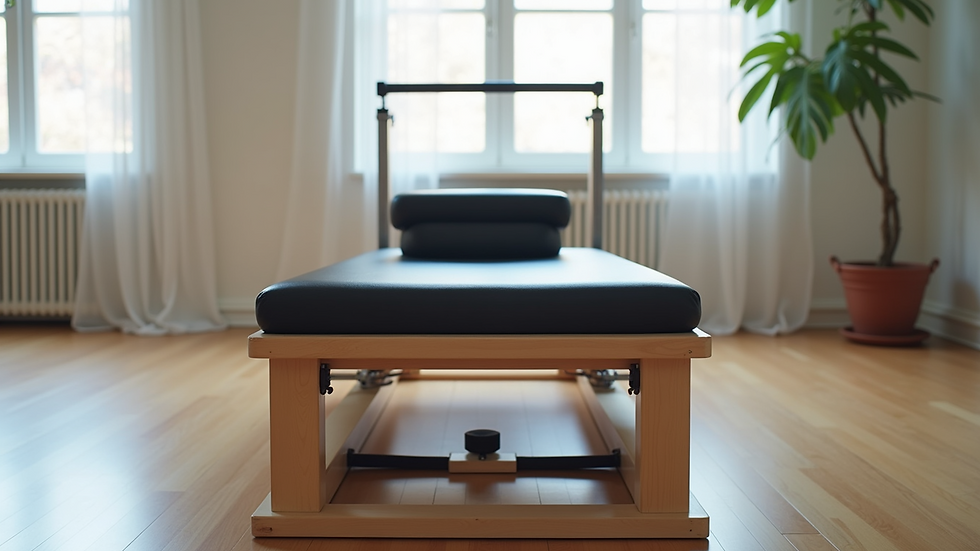Unlocking Movement: How Pilates Transforms Orthopaedic Conditions Through Trigger Points and Mat Techniques
- alysoncamp8
- Jun 18
- 4 min read
In recent years, Pilates has gained popularity not just as a fitness trend but as a vital component in rehabilitation, especially for those coping with orthopaedic conditions. This post explores how Pilates, particularly through trigger point techniques and mat exercises, plays a crucial role in enhancing movement and alleviating pain associated with various physical challenges.
Understanding Orthopaedic Conditions
Orthopaedic conditions refer to a wide array of issues affecting the musculoskeletal system, which includes joints, bones, ligaments, and muscles. These issues can arise from injuries, age-related wear and tear, or chronic illnesses like arthritis.
Pilates provides a distinct method to boost flexibility, mobility, and strength for those facing these challenges. It emphasizes core stability and controlled movements, which help to realign the body and increase physical awareness. For instance, studies have shown that individuals with knee osteoarthritis report a 30% improvement in pain levels after engaging in regular Pilates sessions tailored to their needs.
The Importance of Core Stability
Core stability is essential in Pilates. Strengthening the muscles surrounding the spine, pelvis, and abdomen can enhance posture, alleviate pain, and improve overall body function.
For individuals with orthopaedic conditions, proper spinal alignment is especially critical. Engaging deep abdominal muscles not only supports the spine but also facilitates better movement patterns. For example, participants practicing Pilates consistently may experience up to a 25% improvement in balance, aiding their daily activities and rehabilitation processes.
Incorporating targeted core strengthening exercises into routine Pilates sessions can greatly assist those managing injuries or chronic conditions.
Trigger Point Pilates: Targeting Pain at Its Source
Trigger points are tight knots in muscles that can cause referred pain in other body areas. These problematic spots can lead to chronic discomfort, making movement difficult.
Trigger point Pilates targets these problematic areas through specific exercises designed to stretch and strengthen the muscles involved. For instance, practitioners often use massage balls and foam rollers to pinpoint and alleviate tension.
Research indicates that regular trigger point work can lead to a 40% reduction in muscle soreness, supporting ongoing movement efficiency and a lower risk of future injury.
Mat Pilates: A Foundation for Recovery
Mat Pilates, the original Pilates method, relies on body weight and controlled movements for enhancing strength and flexibility.
For those with orthopaedic issues, mat Pilates serves as a gentle entry into physical activity. It offers the flexibility to modify exercises based on individual capabilities and limitations.
Exercises can be adapted for everyone, from beginners to advanced participants, ensuring that all can partake at their own pace. This adaptability makes Pilates particularly effective in rehabilitation settings, allowing each person to progress safely.
Benefits of Pilates for Orthopaedic Conditions
Improved Flexibility and Range of Motion
Consistent Pilates practice can lead to significant improvements in flexibility and an increased range of motion in affected joints. For example, individuals suffering from arthritis may notice a decrease in joint stiffness by up to 50% through regular stretching and movement.
Muscle Strengthening and Balance
Pilates emphasizes controlled movements, which enhance muscle strength and balance. Research shows that stronger muscles provide better support to joints, thus minimizing injury risks. For example, participants in a study exhibited a 35% increase in core strength after eight weeks of Pilates practice.
Enhanced Posture and Alignment
Many orthopaedic issues are linked to poor posture and misalignment. Pilates promotes awareness of body mechanics, fostering proper alignment and potentially relieving chronic discomfort. Improved posture can lead to better respiratory function and lower back pain reduction, with some feeling less tension immediately after a session.
Pain Management
Breathing techniques and relaxation exercises integral to Pilates help manage pain levels. Many practitioners report reduced chronic pain after consistent practice, contributing to an overall improvement in quality of life. Some studies even show up to a 30% decrease in pain perception after three months of Pilates.
Tailoring Pilates to Individual Needs
It's crucial to understand that every body is distinct, and a personalized approach is vital. Certified Pilates instructors can adapt exercises to meet individuals' specific needs, making the discipline flexible and accessible for rehabilitation.
If you are dealing with an orthopaedic condition, consider collaborating with a qualified instructor experienced in such challenges. They can assist you in identifying tension areas and customize your practice to enhance recovery.
Integrating Mind-Body Connection
Central to Pilates is the mind-body connection. This practice fosters mindfulness, encouraging individuals to connect with their physical sensations and emotions.
For those dealing with chronic pain, this connection can be empowering. Focusing on movement quality and awareness can help reduce anxiety about physical limitations, promoting a more positive relationship with one's body.
Your Path to Recovery with Pilates
Pilates presents a dynamic solution for those facing orthopaedic conditions. Combining core stability, targeted trigger point exercises, and adaptable mat techniques allows individuals to unlock movement and improve their overall well-being.
Whether you are new to Pilates or looking for advanced rehabilitation methods, remember: the journey is about progress, not perfection. Consult with a skilled instructor, listen to your body, and engage fully in your recovery process.
Unlocking movement encompasses more than physical abilities; it means rediscovering joy and freedom in your body. Pilates may be the key to a healthier, more active lifestyle.
If you are ready to explore its transformative benefits, consider integrating Pilates into your routine and feel the positive changes it can bring.




Comments